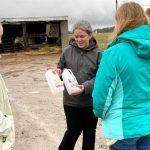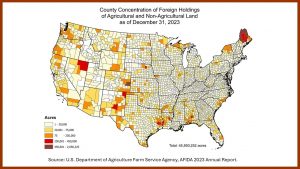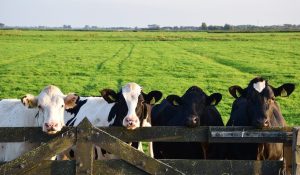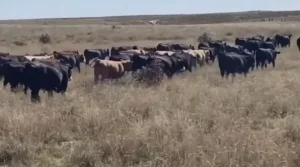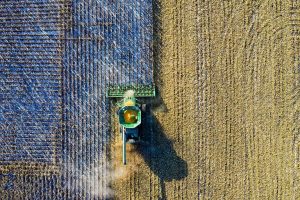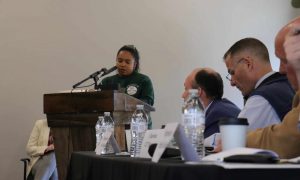
Numbers can be deceiving, and Xochitl Torres-Small told the Rural Action Caucus that despite record-setting net agricultural revenue, the outcomes for many farmers have been less rosy.
That inequity is driving the U.S. Department of Agriculture’s agenda during development of the next farm bill. Torres-Small serves as undersecretary for Rural Development.
“Congress writes the farm bill, but if they’re doing it right, they’re listening to people like you,” she said. “They know that it’s people all across the country that experience the farm bill and how it impacts those places and those people who work so hard every single day to supply the rest of our country with the things that we sometimes take for granted.”
She cited figures that half of U.S. farmers were not able to break even in 2022 and 80 percent of farmers had to supplement their income with non-farm work.
“So clearly while the system of conventional ag works for some, works for a few and feeds a lot of people. It doesn’t necessarily work for the many,” she said. “It’s presented a choice for a lot of farmers, whether they have to have this feeling that they have to either go big or get out.”
Value-added products may be the key to both setting farmers apart from each other and reinforcing the economic viability of their counties.
Torres Small recounted a conversation with an Iowa dairy farmer who was concerned her family farm wouldn’t survive.
“What she said to me is ‘It doesn’t matter how hard we work — you know dairy is a 365 days-a-year, 24 hours a day business. The cows are always needing to be milked — and it doesn’t matter how many innovations we make, how hard we work — we’re stuck with the same price that everyone gets,’” Torres Small said.
The opportunity comes in turning that milk into cheese or ice cream, allowing for more diversification.
“That’s what I think we can do more of across the country if we are supporting farmers’ visions about how to add value to their product, but then also recognizing — and you know this better than anyone — that when it comes to rural, it’s about the entire community… and you see the impact of how the work that you do on the ground impacts the entire community.”
Torres-Small remarked that Rural Development being embedded throughout the country helped keep the United States functioning despite restrictions during the pandemic.
“In the midst of COVID, USDA was relied on to get out crucial aid because sometimes, when aid comes just through the states, it doesn’t reach everywhere, so being able to invest in people who live in the communities they serve makes a huge difference for rural Americans,” she said. “USDA and rural development are pretty unique in that we have people living in the communities they serve, and that gives us a different perspective.”


